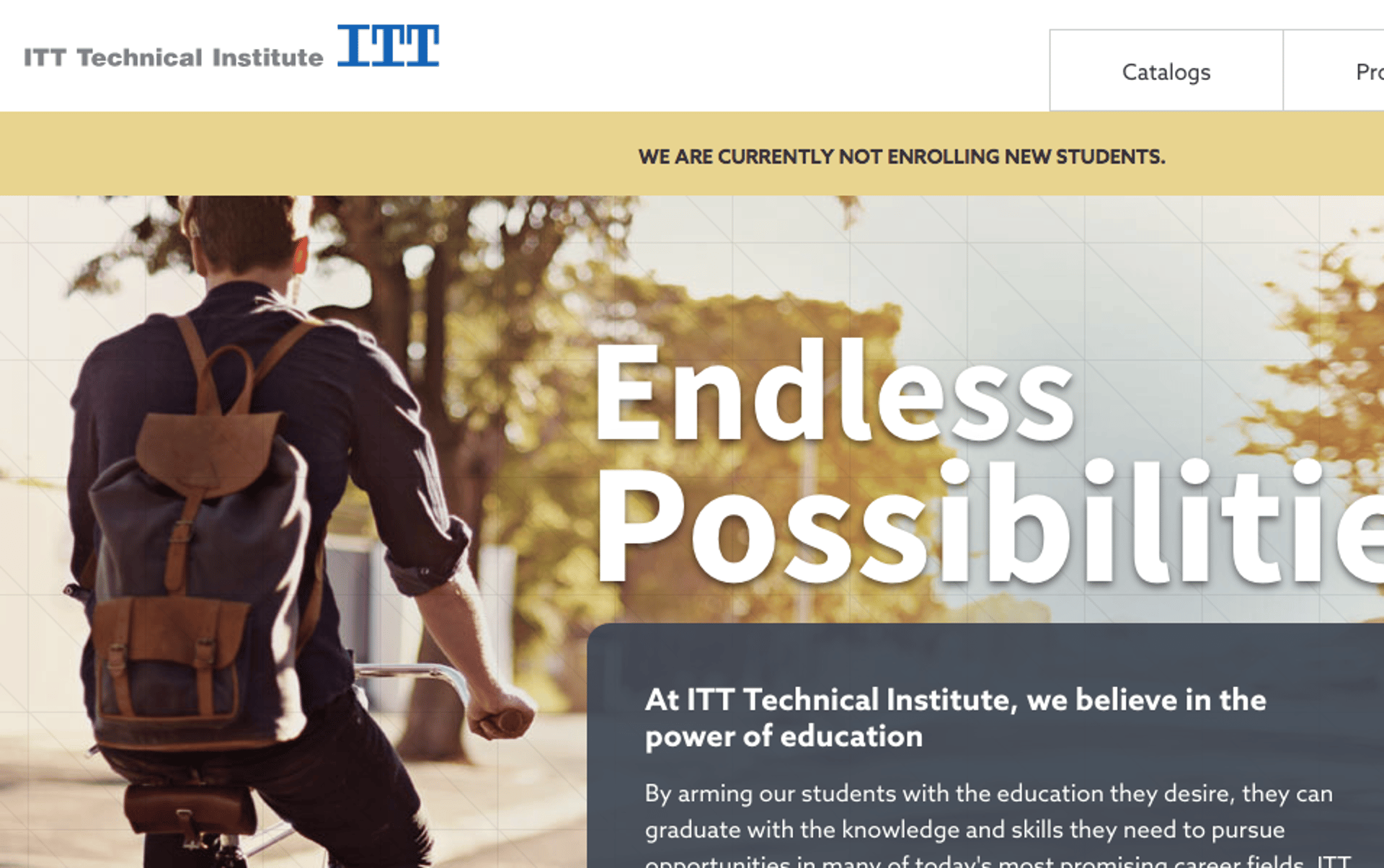
One of the saddest chapters of U.S. higher education closed on Monday, as ITT Technical Institute suddenly announced it was shutting down. ITT has been hit with numerous legal actions, and just last week it finally received what amounted to a death penalty from the U.S. Department of Education, which said it would no longer allow the school to enroll students using federal financial aid.
ITT is the poster child for what can go wrong in for-profit colleges.
The demise of ITT harms thousands of employees and an untold number of current and former students.
“It is with profound regret that we must report that ITT Educational Services Inc. will discontinue academic operations at all of its ITT Technical Institutes permanently after approximately 50 years of continuous service,” the firm said in a statement. “With what we believe is a complete disregard by the U.S. Department of Education for due process to the company, hundreds of thousands of current students and alumni and more than 8,000 employees will be negatively affected.”
The fallout
Students who are currently enrolled at the school may very find it’s too late to enroll somewhere else this fall, and it’s unclear that the credits they’ve earned so far will be accepted at other institutions. It’s possible that their federal loans will be forgiven through a “closed school loan discharge.”
ITT graduates still have an accredited degree, but the episode obviously casts a shadow on their credentials.
The Department of Education anticipated this possibility last week, and it offered this somber set of options to students, listed in this blog post. None of the options are good.
ITT’s footprint was huge. The company had more than 130 campuses in 38 states; it enrolled 45,000 students and reported $850 million in revenue, according to the Los Angeles Times.
A paper released in September 2015 by the Brookings Institution reported that in 2014, ITT had 191,225 borrowers carrying $4.6 billion in debt.
Stats stretched the definition of ‘job placement’
As an example of ITT’s legal troubles, the Massachusetts Attorney General’s Office sued the firm in April. It accused the firm of counting jobs at big box electronics retailers in its job placement statistics. According to the AG’s office:
ITT’s admissions representatives allegedly told prospective students that anywhere from 80 percent to 100 percent of graduates obtained jobs in or related to their field of study. Real placement rates were actually 50 percent or less at each campus. ITT did not disclose that its placement rates included graduates with jobs outside their field of study and graduates with internships or short-term, unsustainable jobs who never received permanent, sustainable employment – including any job that somehow involved the use of a computer. ITT claimed that jobs simply selling computers at big box stores counted as placements, and even counted a graduate as placed who provided customer service for an airline checking travelers into their flights.”
The Consumer Financial Protection Bureau sued ITT earlier this year, too. (I wrote about it then.)
“(ITT’s) own analysis projected a default rate of 64 percent on these loans — key information that was never shared with the borrowers,” said CFPB director Richard Cordray. “The result was that while many of the students got poorer, the investors and shareholders got richer.”
The for-profit temptation
Two-year degrees from the schools, which target low-income students, cost about $45,000, the CFPB said. Only 28 percent of students graduated within six years.
For-profit schools aren’t all bad, of course. But the temptation to see students as easy revenue — and tap into a massive revenue stream made available by the federal government through its loan programs — sets the stage for possible corruption.
The issue will only become more important. Retraining is seen by many as the panacea to frequent displacement of workers in the modern economy. It’s common for workers to endure three, four or five career changes during their 40-plus years of work.
America has got to get serious about making continuing education accessible — and, for God’s sake, scam-free — if we have any hope of surviving the rapid changes coming this century.
What’s your take on the rapid rise of for-profit colleges? Share with us in comments below or on our Facebook page.
More from Bob Sullivan:




Add a Comment
Our Policy: We welcome relevant and respectful comments in order to foster healthy and informative discussions. All other comments may be removed. Comments with links are automatically held for moderation.